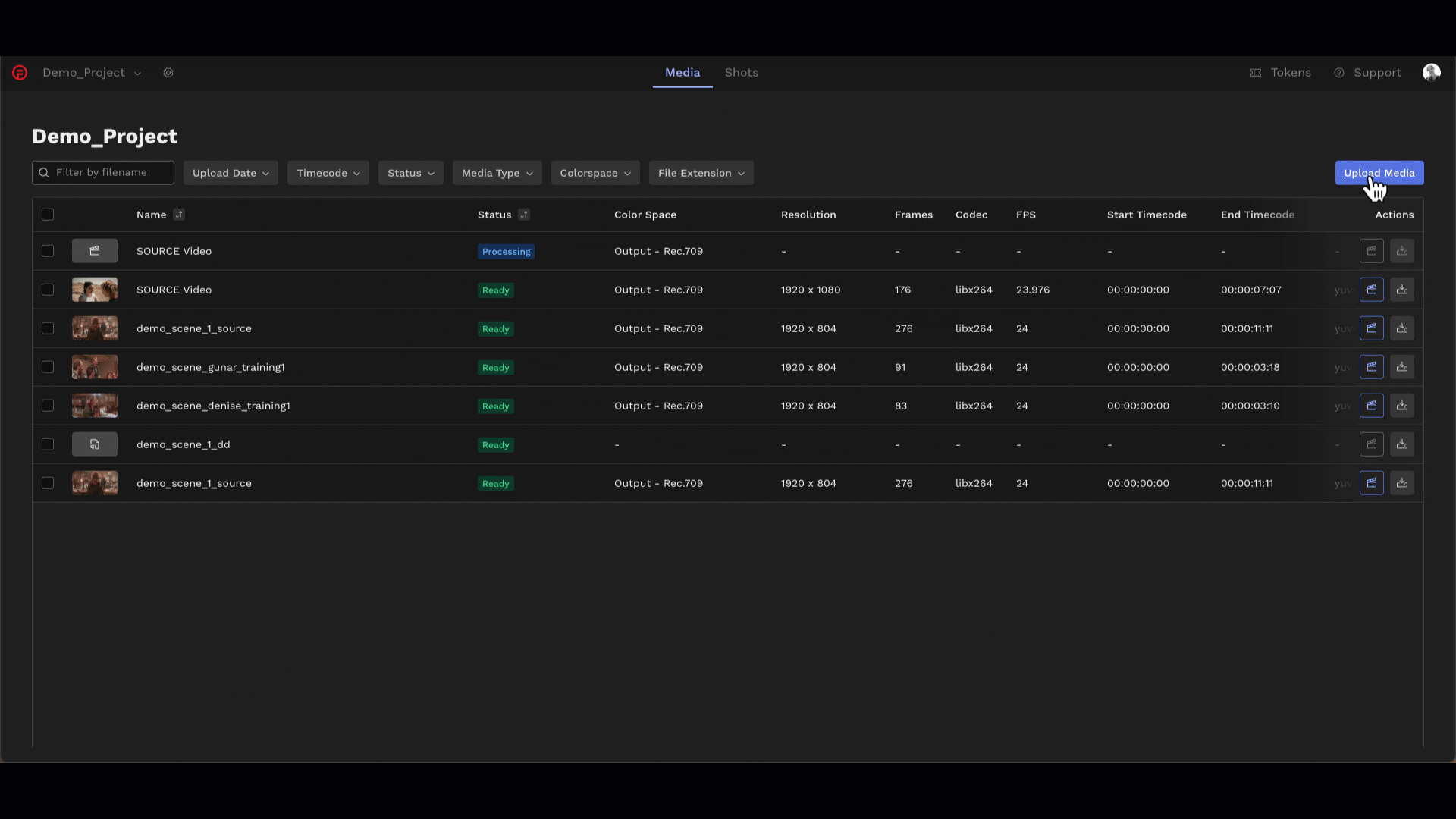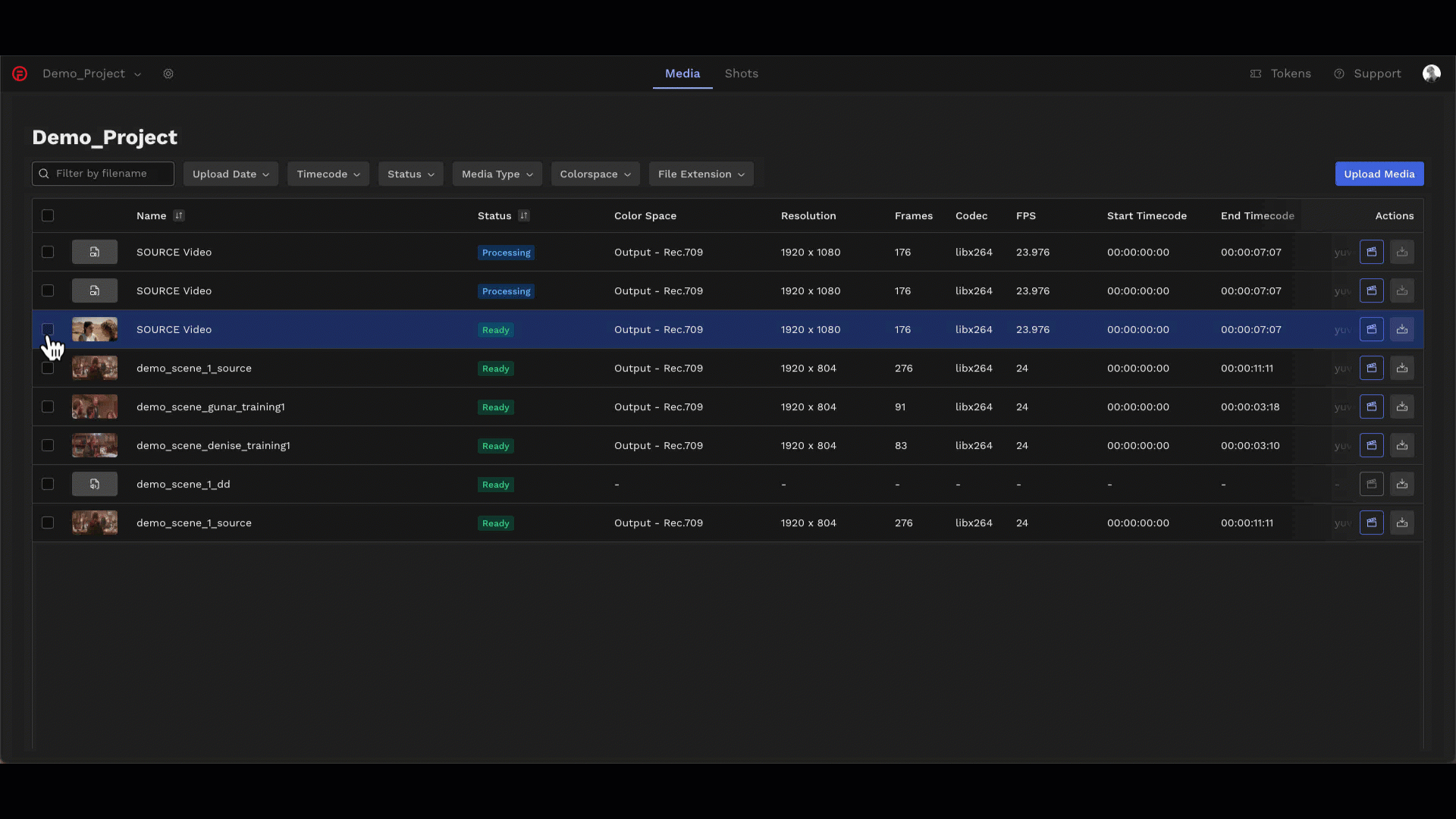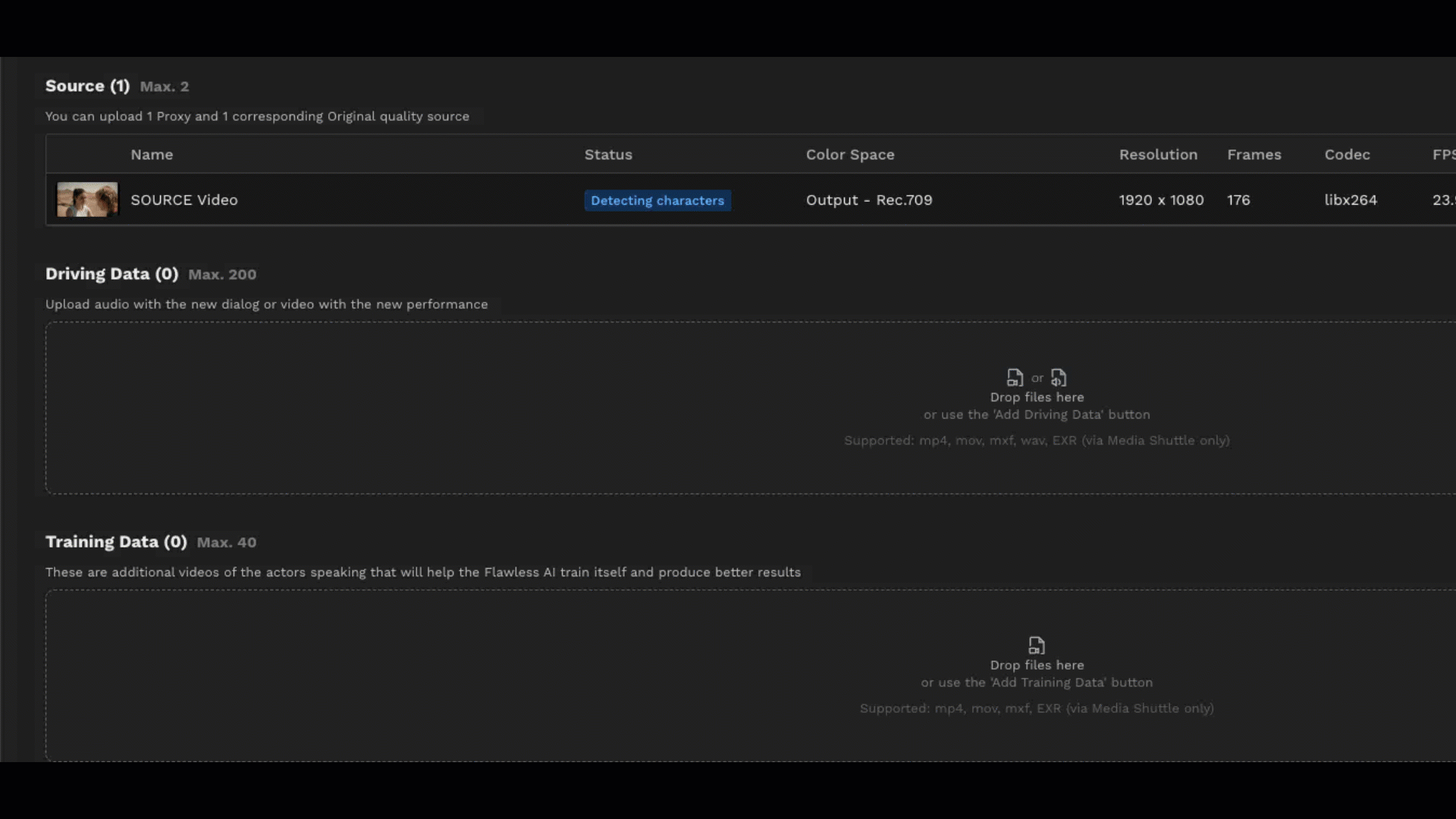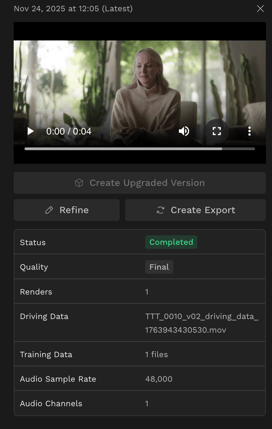How To Create a Vub
Step-by-step guide to generating a vub
Table of Contents
Step 1 - Create a Project
Editing Project Type
Localization Project Type
Step 2 - Upload Media
Step 3 - Create Shot
Step 4 - Add Driving Data and/or Training Data
Step 5 - Generate a Vub
Step 6 - Vub In Progress to Completed
A vub is a visual dub that combines your Source Media (original shot) with Driving Data (new performance).
Step 1 - Create a Project

- Click Create Project
- Name your project (note that currently a project cannot be renamed once created)
- Choose Project Type
- If you choose the Editing project type, enter and confirm the e-mail of the Rights Clearance Manager for the project, then click "Create".
- If you choose the Localization project type, click "Create" to proceed.
The choice of project type is related to the Artistic Rights Treasury - DeepEditor's system for managing consent. Read the guidance below about when to choose Editing and when to choose Localization.
Editing Project Type
If your intended use for DeepEditor is to alter performances, select the Editing project type. You will then be prompted to input the email address of your Rights Clearance Manager.

Localization Project Type
If your project includes a legal "Dubbing Agreement" or comprehensive consent from the talent (or an authorized representative of their estate or interests) for facial modifications, select the Localization Project Type.

Selecting Localization means you can bypass the Artistic Rights Treasury process.
We trust our customers to act in good faith regarding the legal implications of opting to bypass the Artistic Rights Treasury.
Project Settings
If you are unsure whether an existing project is an Editing or Localization project, click into the project. If it is an Editing project, you will see an A.R.T. Consent tab and a Settings tab.
In the Settings tab you will see:
- Who created the project
- The date it was created
- The project type

Localization projects do not have an A.R.T. Consent tab or a Settings tabs.
Step 2 - Upload Media to the Media Library
See Supported Media Formats for details of compatible file types.
Upload any of the following media for your vub:
- Source Media – the original performance you want to visually dub.
- Driving Data – the new performance you want to apply to the source (this can be video or audio).
- Training Data (optional) – additional footage of the same character to help improve image fidelity (lighting and makeup must be consistent).

Step 3 - Create a Shot from your Source Media
From your Media Library, check any uploaded video clip you want to use as Source Media and click Create Shot.

-
To create multiple shots at once, select several media items and choose Create Shots. DeepEditor will automatically generate one shot per selected file.
Important: Shot Creation Centers on Source Media
When creating shots, DeepEditor treats each selected video file as a new source.
This means:- For each video file selected, a separate shot will be created.
-
- You should only select the intended source media when creating a shot.
Do not select your source, driving data and training data together when creating shots, doing so will create multiple shots, with your driving data/training data files mistakenly used as a source in the separate shots.
Step 4 - Add Driving Data and/or Training Data
Once your shot is created, you can add Driving Data and Training Data (optional) within the shot interface. You can add these:
- From your library - files already uploaded to the media library
- From your computer - files stored on a local folder
- Via Media Shuttle - larger files on a local folder, like .exr image sequences
When adding 'From your library,' DeepEditor automatically filters the list of available media so that only compatible files appear, ensuring you can only add valid media for that role.
For example:
- Audio files won’t appear as valid sources or training data.
- Media with mismatched frame rates or unsupported formats will be filtered out.
You can also upload new media directly within a shot. When you do, DeepEditor automatically routes the file back to your project’s Media Library for future reuse, keeping everything centralized and organized.

Once your shot has all the required media, Source, Driving Data, and optionally Training Data, you can progress on to character library management and vub creation.
Step 5 - Generate a Vub
Once you have uploaded Source, Driving Data, and Training Data (optional) you can create your vub by clicking on the Generate Vub button.

- Click on Generate Vub
- Enter Vub Name
- Choose your preferred Quality Level
- Select the character you want to vub
- Click on View Character Appearances to check that these have been identified correctly. If you need to make changes, go to the Characters tab to do so.
- Click Next and select your Source media, Driving data and Training data (if using)
- Click Next to check all details, then click Create to start the vub generation process
You can now close the webpage if you wish.
Step 6 - Vub In Progress to Completed
In the Vub tab, your newly created vub will be displayed with status "In Progress".

When your vub is ready, you will get an e-mail notification.

Note: Generating a vub can take between 1 and 11 hours depending on the duration and resolution of your media and whether you have uploaded Training Data.
If you are concerned about how long it is taking for your vub to be generated, please contact us at support@flawless.app.
Here are the average times it currently takes to generate a vub based on the Quality setting you select and whether you have uploaded Training Data:
|
Quality Level |
Average Time to Generate |
|
Draft |
1-2 hour |
|
Draft with Training |
4-11 hours |
|
Final |
2-4 hours |
|
Final with Training |
4-11 hours |
Clicking on a vub row will open a window on the right side of your screen that shows more information about your vub.


Note: What you see in the Preview and in the Refinement tool is not the full quality resolution of your export, but a version optimized for web playback.
Consult our Lip Sync Refinement section for full details of how to refine a vub in DeepEditor. Note that you can refine, render and export vubs multiple times without being charged.